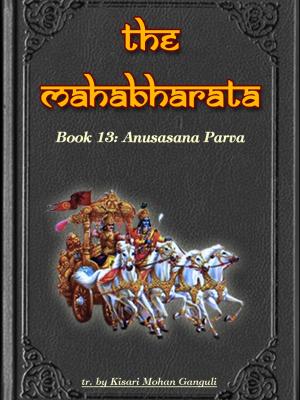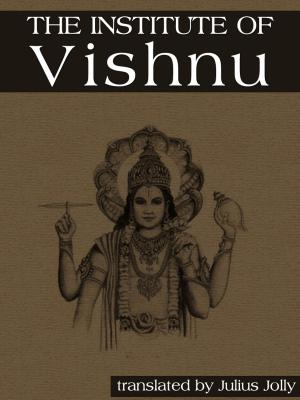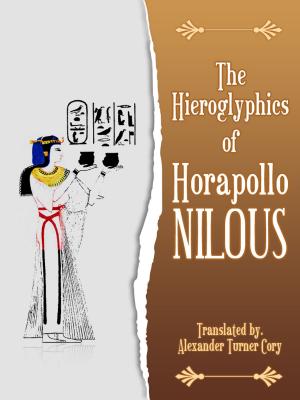The Satapatha Brahmana, Part III
Nonfiction, Religion & Spirituality, Eastern Religions, Hinduism, Inspiration & Meditation, Spirituality, Fiction & Literature, Religious| Author: | Julius Eggeling | ISBN: | 1230000101869 |
| Publisher: | AppsPublisher | Publication: | January 23, 2013 |
| Imprint: | Language: | English |
| Author: | Julius Eggeling |
| ISBN: | 1230000101869 |
| Publisher: | AppsPublisher |
| Publication: | January 23, 2013 |
| Imprint: | |
| Language: | English |
The Satapatha Brahmana, Part III
by Julius Eggeling
THE first of the three Kândas contained in the present volume continues the dogmatic discussion of the different forms of Soma-sacrifice, in connection with which two important ceremonies, the Vâgapeya and Râgasûya, are considered. From a ritualistic point of view, there is a radical difference between these two ceremonies. The Râgasûya, or 'inauguration of a king,' strictly speaking, is not a Soma-sacrifice, but rather a complex religious ceremony which includes, amongst other rites, the performance of a number of Soma-sacrifices of different kinds. The Vâgapeya, or 'drink of strength' (or, perhaps, 'the race-cup'), on the other hand, is recognised as one of the different forms (samsthâ) which a single Soma-sacrifice may take. As a matter of fact, however, this form hardly ever occurs, as most of the others constantly do, in connection with, and as a constituent element of, other ceremonies, but is almost exclusively performed as an independent sacrifice. The reason why this sacrifice has received a special treatment in the Brâhmana, between the Agnishtoma and the Râgasûya, doubtless is that, unlike the other forms of Soma-sacrifice, it has some striking features of its own which stamp it, like the Râgasûya, as a political ceremony. According to certain ritualistic authorities, indeed, the performance of the Vâgapeya should be arranged in much the same way as that of the Râgasûya; that is, just as the central ceremony of the Râgasûya, viz. the Abhishekanîya or consecration, is preceded and followed by certain other Soma-days, so the Vâgapeya should be preceded and followed by exactly corresponding ceremonies.
The preceding Kânda was chiefly taken up with a detailed discussion of the simplest form of a complete Soma-sacrifice, the Agnishtoma, serving as the model for all other kinds of one-day (ekâha) Soma-sacrifices; and it also adverted incidentally to some of the special features of such of the remaining fundamental forms of Soma-sacrifice as are required for the performance of sacrificial periods of from two to twelve pressing-days--the so-called ahîna-sacrifices--as well as for the performance of the sacrificial sessions (sattra) lasting from twelve days upwards. As the discussion of the Vâgapeya presupposes a knowledge of several of those fundamental forms of Soma-sacrifice, it may not be out of place here briefly to recapitulate their characteristic features.
The Satapatha Brahmana, Part III
by Julius Eggeling
THE first of the three Kândas contained in the present volume continues the dogmatic discussion of the different forms of Soma-sacrifice, in connection with which two important ceremonies, the Vâgapeya and Râgasûya, are considered. From a ritualistic point of view, there is a radical difference between these two ceremonies. The Râgasûya, or 'inauguration of a king,' strictly speaking, is not a Soma-sacrifice, but rather a complex religious ceremony which includes, amongst other rites, the performance of a number of Soma-sacrifices of different kinds. The Vâgapeya, or 'drink of strength' (or, perhaps, 'the race-cup'), on the other hand, is recognised as one of the different forms (samsthâ) which a single Soma-sacrifice may take. As a matter of fact, however, this form hardly ever occurs, as most of the others constantly do, in connection with, and as a constituent element of, other ceremonies, but is almost exclusively performed as an independent sacrifice. The reason why this sacrifice has received a special treatment in the Brâhmana, between the Agnishtoma and the Râgasûya, doubtless is that, unlike the other forms of Soma-sacrifice, it has some striking features of its own which stamp it, like the Râgasûya, as a political ceremony. According to certain ritualistic authorities, indeed, the performance of the Vâgapeya should be arranged in much the same way as that of the Râgasûya; that is, just as the central ceremony of the Râgasûya, viz. the Abhishekanîya or consecration, is preceded and followed by certain other Soma-days, so the Vâgapeya should be preceded and followed by exactly corresponding ceremonies.
The preceding Kânda was chiefly taken up with a detailed discussion of the simplest form of a complete Soma-sacrifice, the Agnishtoma, serving as the model for all other kinds of one-day (ekâha) Soma-sacrifices; and it also adverted incidentally to some of the special features of such of the remaining fundamental forms of Soma-sacrifice as are required for the performance of sacrificial periods of from two to twelve pressing-days--the so-called ahîna-sacrifices--as well as for the performance of the sacrificial sessions (sattra) lasting from twelve days upwards. As the discussion of the Vâgapeya presupposes a knowledge of several of those fundamental forms of Soma-sacrifice, it may not be out of place here briefly to recapitulate their characteristic features.















